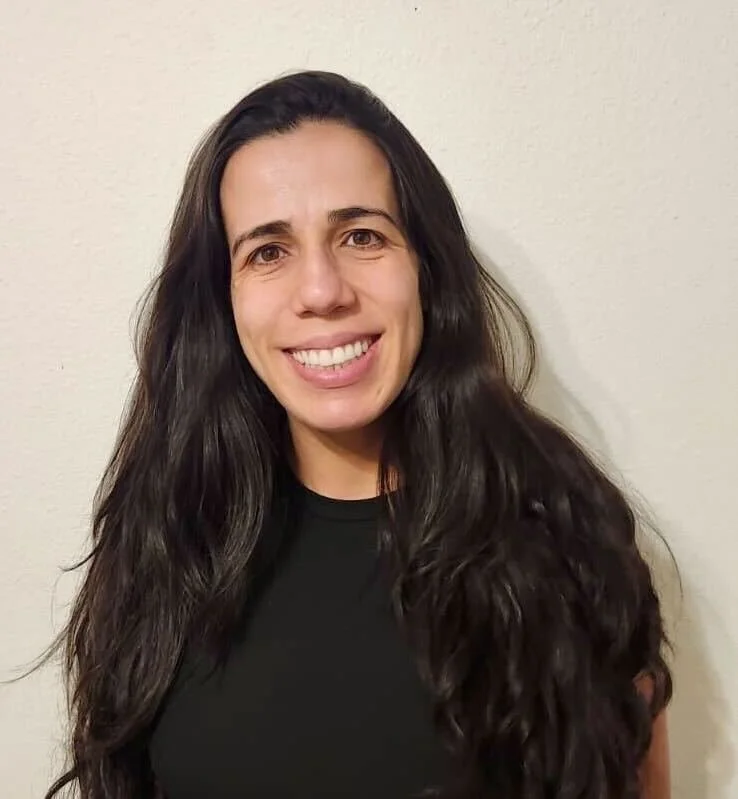Marina Silveira, Ph.D.
Silveira received a master’s degree in oncology from the Federal University of São Carlos, Brazil. She then received her doctorate in neurobiology at the University of São Paulo, Brazil. After postdoctoral training at the Kresge Hearing Institute at the University of Michigan, she became an assistant professor in the department of neuroscience, development, and regenerative biology at the University of Texas at San Antonio. Her 2026 Emerging Research Grant is generously funded by Royal Arch Research Assistance.
Age-related hearing loss is the most common form of hearing loss in older adults. Age-related hearing loss causes difficulty understanding speech in noisy environments. Consequently, hearing loss has a major negative impact on quality of life and leads to social isolation and loneliness, and is a significant risk factor for dementia and Alzheimer’s.
It is well known that age-related hearing loss shifts the excitatory-inhibitory balance in the inferior colliculus to favor excitability. This enhancement in excitability can contribute to pathological conditions such as tinnitus and poor temporal processing. However, the mechanisms that regulate this enhanced excitability in the inferior colliculus are unclear.
A major neuromodulator called serotonin has been shown to regulate the excitatory-inhibitory balance in other brain regions. In preliminary studies for this proposal, we found that serotonin strongly influences the activity of a class of inhibitory neurons in the inferior colliculus that express neuropeptide Y. Here, we will test the hypothesis that dysfunction in serotonergic and neuropeptide Y signaling underlies enhanced excitability in the inferior colliculus in age-related hearing loss. Because the serotonergic system is a common target for pharmaceuticals, our results will also provide foundational insights that might guide future pharmacological interventions for age-related hearing loss.
Our long-term goal is to determine how neuromodulatory inputs alter neural networks in the central auditory pathway, providing a mechanistic foundation for the development of neuromodulatory therapeutic agents that aim to improve hearing for the hearing impaired.
This project builds on our long-term interest in how neuromodulatory inputs to the auditory midbrain change in age-related hearing loss. The inspiration comes from our past work about neuropeptide Y signaling in the inferior colliculus, as well as our new data showing that serotonin differentially regulates classes of neurons in the inferior colliculus.
I didn’t have any scientists in my family, and I didn’t know I could have a career in science. During my undergrad, I loved the neuroanatomy class, which sparked my interest in seeking opportunities in an anatomy lab. Initially, I primarily assisted in preparing laboratory classes for other students and helped them study for their exams. But I had an amazing undergraduate mentor who introduced me to research and guided me through following the steps on how to have a career in science.
During my nursing degree, I interacted with many Deaf patients, and that influenced my choice to become an auditory scientist.
A highlight of my career is starting my own lab and having the first trainees join the lab. As a child, I always wanted to be a teacher. Nowadays, I find great joy in mentoring students in the lab and teaching neuroscience classes to undergraduate and graduate students. Being a mentor is my favorite part of the job, and it brings me a lot of joy seeing the trainees in the lab succeed, whether they successfully performed an experiment, presented a poster, received a travel award, or published a paper.
Outside of the lab, I love to spend time with my family, my husband Steve, my 3-year-old son (Eli), baby Olivia (arriving in October), and Violet, our dog. I also love going for long runs. Running and being outside help me think and put my ideas together. I used to be a water polo player and an open water swimmer! I participated in open water competitions on the beautiful beaches in Brazil!
About 10 years from now, I envision my lab playing a key role in identifying the mechanisms by which neuromodulatory inputs alter neurons and circuits in the auditory midbrain, as well as how these inputs change in the context of age-related hearing loss.
The Research
Marina Silveira, Ph.D. | University of Texas at San Antonio
Age-related changes in neuromodulatory signaling in the auditory midbrain
Age-related hearing loss is the most common form of hearing loss in older adults. Age-related hearing loss causes difficulty understanding speech in noisy environments. Consequently, hearing loss has a major negative impact on quality of life and leads to social isolation, loneliness, and is a significant risk factor for dementia and Alzheimer’s. It is well known that age-related hearing loss shifts the excitatory-inhibitory balance in the inferior colliculus to favor excitability. This enhancement in excitability can contribute to pathological conditions such as tinnitus and poor temporal processing.
However, the mechanisms that regulate this enhanced excitability in the inferior colliculus are unclear. A major neuromodulator called serotonin has been shown to regulate the excitatory-inhibitory balance in other brain regions. In preliminary studies for this proposal, we found that serotonin strongly influences the activity of a class of inhibitory neurons in the inferior colliculus that express neuropeptide Y.
Here, we will test the hypothesis that dysfunction in serotonergic and neuropeptide Y signaling underlies enhanced excitability in the inferior colliculus in age-related hearing loss. Because the serotonergic system is a common target for pharmaceuticals, our results will also provide foundational insights that might guide future pharmacological interventions for age-related hearing loss.
Long-term goal: Our long-term goal is to determine how neuromodulatory inputs alter neural networks in the central auditory pathway, providing a mechanistic foundation for the development of neuromodulatory therapeutic agents that aim to improve hearing for the hearing-impaired.
Generously funded by Royal Arch Research Assistance
Click to download a condensed version of Silveira’s Meet the Researcher profile.


